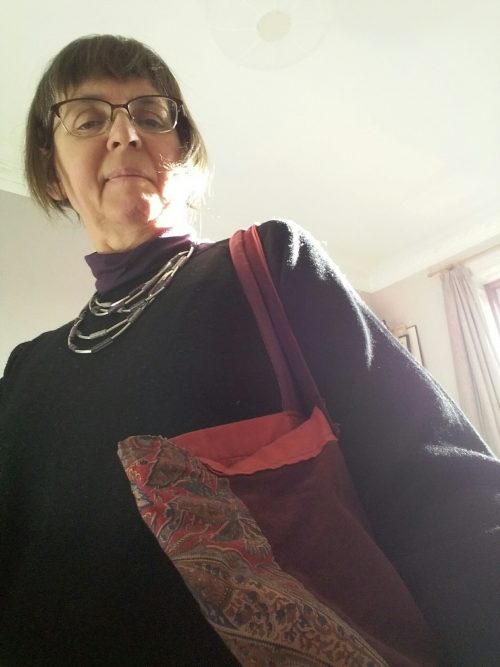Ratnadevi
When I joined Facebook a few months ago I was slightly concerned that it might turn into another of those addictions, like binge watching television series on Netflix (something I have to watch!). But so far, it hasn’t turned out that way, I am glad to say. The holiday adventures of a distant friend just aren’t that much of a page-turner, as it were. But every so often I come across a little Facebook gem; a link to an interesting article or a witty exchange that stays in my mind. Like this one, about a week before Christmas:
G: Don’t buy anything.
Me: Make something.
A: Like, what???
Till very recently, people constantly made things. They sewed, knitted, wove, embroidered and darned their clothes. They carved, hammered and incised tools, toys and weapons. They shaped stone into houses; clay into pots; grass into baskets; flour into bread; fruit and vegetables into conserves and mammoth ivory into talismans. Their bodies, in turn were shaped by the repetitious actions; as were their minds and communities.
I am sure some of this shaving, whittling and pounding was a bit of a grind at times. People must have got repetitive strain injury. (In an experiment a stonemason using Stone Age tools took 400 hours to make a replica of the 30 cm high figure of the “Lion Man.”) Maybe it was a bit mind-numbing as well, even if it was done in community, with plenty of chatting, chanting and storytelling going on. But it was also an enviably healthy way to spend one’s time: rooted in sensory experience, with a sense of purpose and belonging. The writers Richard Maybe and Kathleen Jamie visited an exhibition of ‘Ice Age Art’ in London in 2013, and, looking at small sculptures bearing the imprint of their Palaeolithic makers, agreed that they ‘felt something strangely akin to homesickness’.
The prevailing production sounds affecting my ear these modern days is the plasticky clicking of the keyboard, accompanied by the background humming of the hard drive. You could say I am kind of making something: a word document that transports ideas into the brains of other people who have the matching equipment to decode them. But something is lacking. I am out of direct touch with my body and with other people; an experience that registers subconsciously as an emptiness. But relief is only a mouse click away: buying something or watching a movie will fill that gap nicely, won’t it?
Not surprisingly, there is a rising movement counter to this digital and materialistic obsession (and maybe you are already part of it?): a renewal of craft activities. Vintage sewing patterns are being re-issued, knitting and sewing courses are thriving, and millions of people watch YouTube tutorials about all manner of manual skills. BBC programmes about competitive baking, gardening and pottery enjoy large numbers of viewers and The Transitional Town Movement talks about “The Great Re-skilling,” preparing for post-industrial survival.
I was fortunate in that my mum taught me to knit, sew and alter things and I often have a little project on the go. Most of my wardrobe consists of second-hand, slightly adjusted clothes, and I also “re-purpose” objects, like turning a couple of old dresses or jeans into a shopping bag, with nice long handles to carry over the shoulder (not all shopping is frivolous, after all). By the way, I just read in “Positive News” magazine that it takes approximately 14 years to drink the amount of water used to make just one pair of jeans. (I am wondering: is that drinking continuously, or a couple of litres a day?) Anyway, a lot of water in countries where water is scarce. And research shows that the average person wears their outfits only six or seven times before binning them.
What motivation could swing you into action? Saving the planet; enjoying the simple pleasure of handling materials; getting hooked into the magic transformation a ball of clay into serviceable mugs; the sense of accomplishment; the soul-nourishing effect of a personal touch in your environment; activating the soothing system of the brain to counteract stress or becoming part of a community of makers that reaches down to the stone ages?
Many of us enjoy the privilege of choice: we could make or buy that dress (which would possibly even be cheaper than making it). We decide to make it because it is not about the product so much as the enjoyment inherent in seeing something you envisaged take shape in your hands. It doesn’t matter how long it takes—400 hours, 4 hours or 4 minutes. In any case, whether it is luxury or necessity, whenever we get our hands into something, we could allow ourselves to really enjoy every moment of the process. In that way we heighten the beneficial effects of it through mindfulness: the art of being present, curious, free of judgement. We hear the sounds of roasted hazelnuts being crushed for a chocolate cake; revel in the shape, scent and colour of the flowers we arrange into a bouquet; sense the sowing of a piece of wood satisfyingly through the whole body. We might take in how relaxed we are while knitting and how much we enjoy learning something new, like turning the heel of a sock.
And then, I guess, we could do a selfie and post it on Facebook 😉

